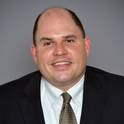
Article
Overcoming Barriers to Lifesaving Treatment in Rural Hospitals
Perspectives of AHIMA
(2017)
Abstract
Telestroke is the use of telemedicine specifically for stroke care. In the United States, about 40 neurologists are available per 100,000 persons. Acute ischemic stroke is often misdiagnosed by primary care or emergency medicine physicians in up to 30 percent of cases. A key advantage of using telestroke is the ability to treat patients in an efficient manner in rural areas where neurologists may not always be readily accessible. The purpose of this research study was to assess the main barriers of telestroke network implementation in rural hospitals. The methodology applied was a systematic literature review with a total of 75 sources used. Significant barriers exist preventing widespread success and adoption of telestroke, including high upfront capital expenditures, insufficient reimbursement by payers, and regulatory hurdles. While the telestroke referral network adds a significant financial burden on hospitals through infrastructure costs such as equipment purchases, staffing, training, and maintenance of the network, it can offer cost savings from the hospital’s point of view while also improving patient outcomes. From a regulatory perspective, the use of telestroke has been tied to telehealth regulations and may not be well defined in all areas in terms of medical board rules, national standards, or clarifications of malpractice surrounding the use of this technology.
Keywords
- barriers; financial; legal; neurologists; rural hospitals; telestroke
Disciplines
Publication Date
Summer June 1, 2017
DOI
12/09/2017
Citation Information
Craig Allan Kimble and Alberto Coustasse. "Overcoming Barriers to Lifesaving Treatment in Rural Hospitals" Perspectives of AHIMA Vol. 14 Iss. Summer 2017 (2017) p. 1 - 18 ISSN: 1559-4122 Available at: http://works.bepress.com/craig-kimble/2/
